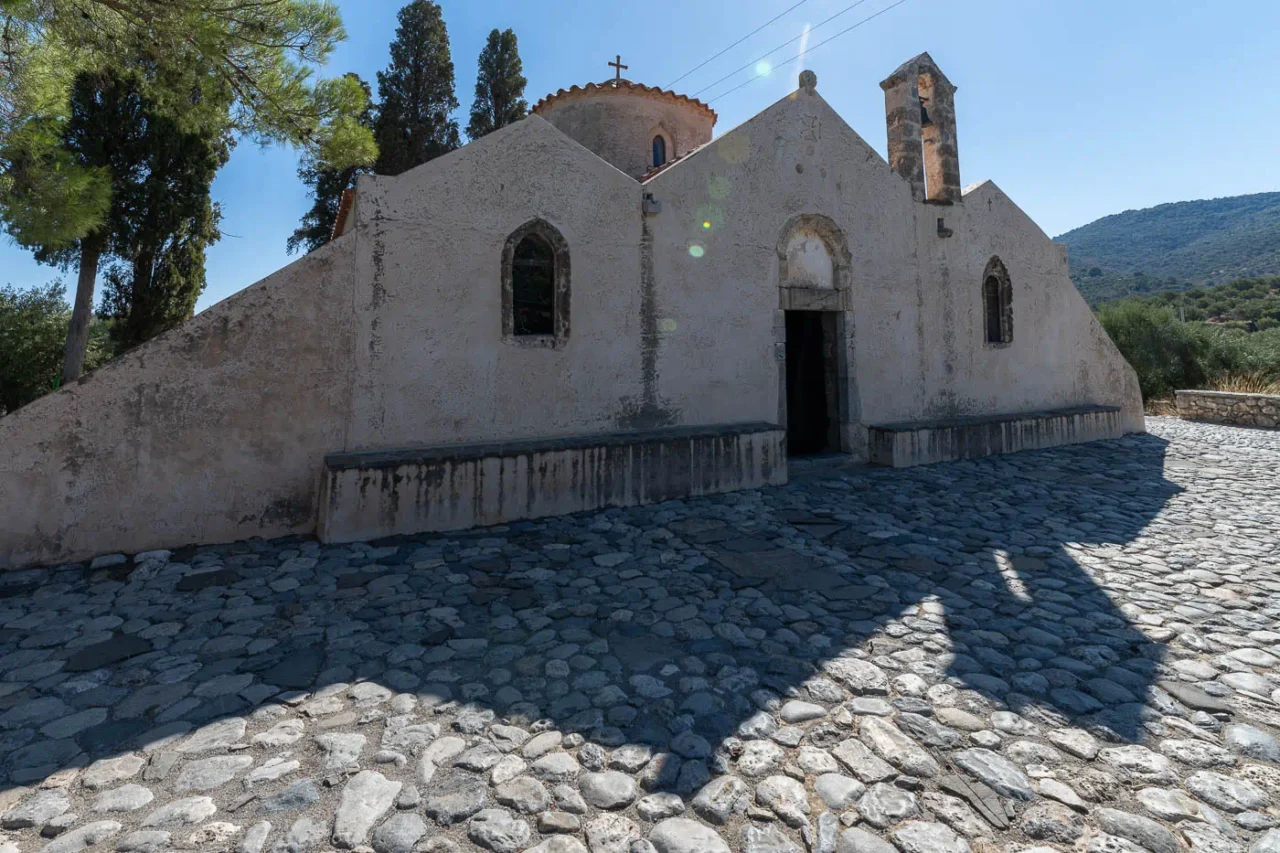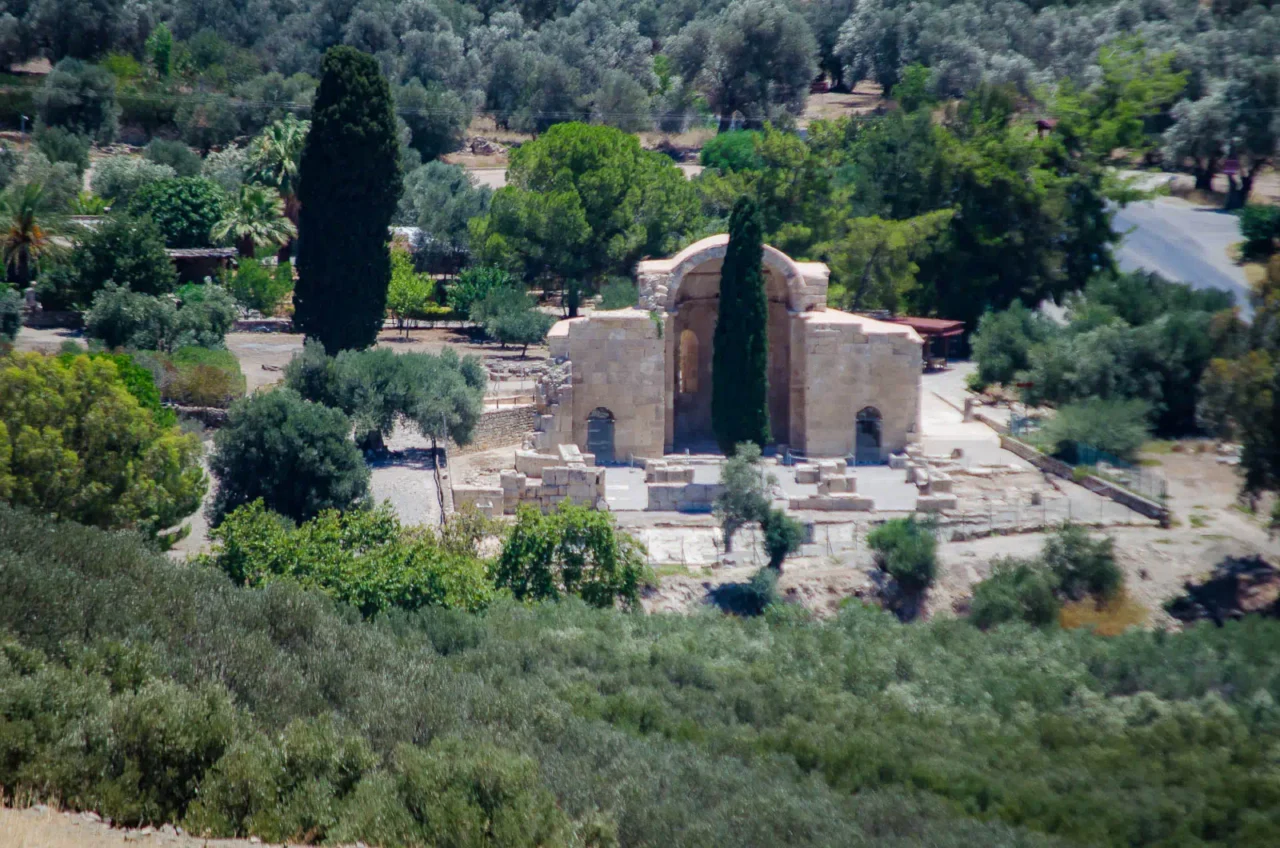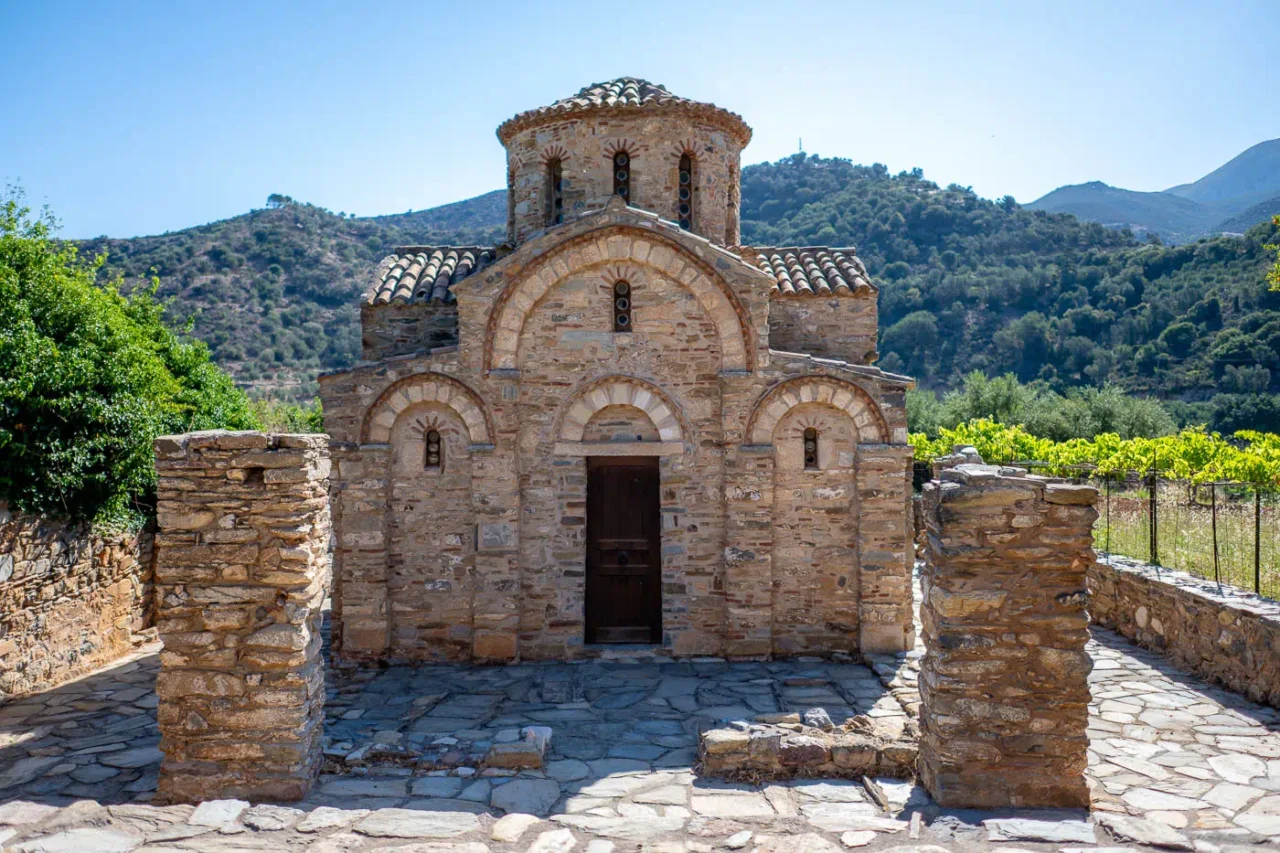
Check here the map of the existing Religion Points of Interests of the Geotour website.
Religious and historically significant points of interest in Crete offer a captivating journey through time, inviting visitors to delve into the island’s rich tapestry of cultural, artistic, and spiritual heritage. These sites, imbued with the echoes of centuries past, transcend religious affiliation and offer a wealth of knowledge and experiences for those who seek to understand the intricate interplay between faith, history, and human ingenuity.



Understanding History and Culture: Crete’s religious sites stand as living testaments to the island’s diverse and complex history, reflecting the influences of various civilizations that have left their mark on its shores. From ancient Minoan sanctuaries to Byzantine churches and Venetian monasteries, these sites offer a tangible connection to the past, allowing us to trace the evolution of religious practices, social customs, and artistic expression over time.
- The church of Agios Onoufrios near Genna, Amari, built in 1329/1330, provides insights into the lives of the local aristocracy, the Varouchas family, who commissioned the church. The frescoes inside the church, depicting scenes from the Bible and the lives of saints, offer a glimpse into the religious beliefs and artistic traditions of the time.
- The monastery of Panagia in Patsos, Amari, believed to have been the seat of the Orthodox Bishopric of Ario, sheds light on the religious and political landscape of Crete during the Byzantine period. The church’s architecture and frescoes reflect the artistic and cultural influences of the time.
- The Arkadi Monastery, a symbol of Cretan resistance against the Ottoman Empire, provides a unique perspective on the island’s struggle for independence. The monastery’s architecture, a blend of Byzantine and Renaissance styles, reflects the cultural fusion that occurred during the Venetian period.
- The monastery of Agios Georgios Epanosifis, a significant spiritual center during the Ottoman period, offers insights into the resilience and cultural identity of the Cretan people under foreign rule. The monastery’s architecture and frescoes reflect the artistic traditions and religious practices of the time.



Appreciating Art and Architecture: Cretan religious sites are veritable treasure troves of artistic and architectural masterpieces. The fusion of diverse styles, the meticulous craftsmanship, and the awe-inspiring grandeur of these structures continue to captivate visitors from all walks of life.
- The church of Panagia Kera in Kritsa, adorned with vibrant frescoes depicting biblical scenes and historical figures, is a testament to the artistic achievements of the late Byzantine period. The church’s unique architectural features, such as the elevated bema and the intricate wood-carved iconostasis, further enhance its artistic value.
The church of Panagia in Meronas showcases a fusion of Byzantine and Venetian Gothic styles, demonstrating the cultural exchange that occurred in Crete during the late Byzantine period. The intricate stone carvings, the elegant arches, and the vibrant frescoes create a visual symphony that speaks to the artistic sensibilities of the time.





Gaining Philosophical Insights: Cretan religious sites, with their libraries, manuscripts, and artifacts, offer opportunities for contemplation and introspection. Engaging with these resources can spark philosophical inquiry and deepen our understanding of the human condition.
- The monastery of Agios Georgios Epanosifis, a significant spiritual center during the Ottoman period, housed a library with valuable manuscripts and books, contributing to the intellectual life of the time. The monastery’s role as a center of learning and spiritual guidance fostered a sense of cultural identity and resilience among the local population.
- The monastery of Aretiou, known for its association with prominent religious figures like Meletios Pigas and Kyrillos Loukaris, played a role in the theological debates and intellectual movements of the 16th and 17th centuries. The monastery’s rich history and intellectual legacy continue to inspire scholars and theologians today.
- The monastery of Toplou, with its collection of ecclesiastical artifacts and documents, including patriarchal sigillia and sultanic firmans, provides a unique perspective on the historical and political context of religious life in Crete.



Connecting with People: Religious sites in Crete serve as focal points for community gatherings, celebrations, and rituals. Visiting these sites allows us to connect with the spiritual traditions that have shaped the lives of countless individuals and communities throughout history.
- The annual pilgrimage to the Panagia Halepa Monastery in Chania, a site associated with miraculous healings and divine intervention, exemplifies the enduring power of faith and the importance of religious traditions in people’s lives.
- The monastery of Agios Georgios Epanosifis, for example, provided support and refuge to the local population during the difficult years of Ottoman rule, fostering a sense of community and resilience. The monastery’s role as a sanctuary and a center of social activity highlights the importance of religious institutions in providing solace and support in times of adversity.
- The Arkadi Monastery, a symbol of Cretan resistance and sacrifice, continues to be a place of pilgrimage and remembrance for the local community. The monastery’s annual commemoration of the holocaust of 1866 serves as a powerful reminder of the island’s history and the enduring spirit of its people.




Promoting Tolerance and Understanding: In a world marked by religious diversity and cultural exchange, understanding the history and significance of different faiths is essential for fostering tolerance, empathy, and peaceful coexistence. Cretan religious sites, with their diverse historical and cultural contexts, can serve as bridges between different communities and promote interfaith dialogue.
- The monastery of Preveli, which sheltered Allied soldiers during World War II, stands as a testament to the importance of interfaith cooperation and humanitarian aid. The monastery’s actions during the war highlight the universal values of compassion and solidarity that unite people across religious divides.
- The monastery of Agkarathos, with its history of destruction and rebuilding during various conflicts, serves as a reminder of the importance of preserving cultural heritage and promoting interfaith understanding.
Exploring Crete’s religious and historically significant points of interest is an enriching experience that transcends religious affiliation. These sites offer a unique opportunity to delve into the island’s past, appreciate its artistic and architectural treasures, engage with philosophical and spiritual traditions, and connect with the vibrant tapestry of its cultural heritage.

